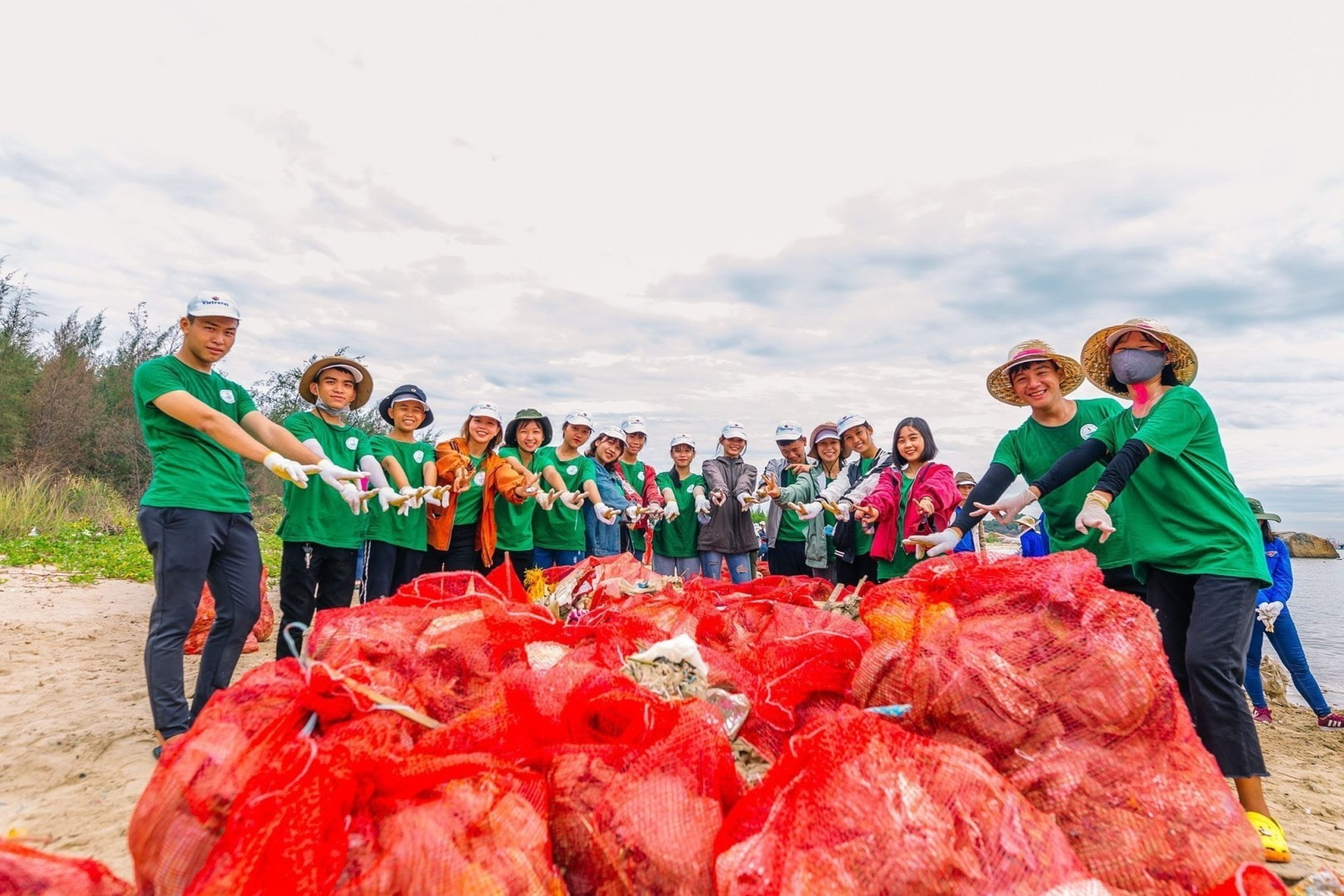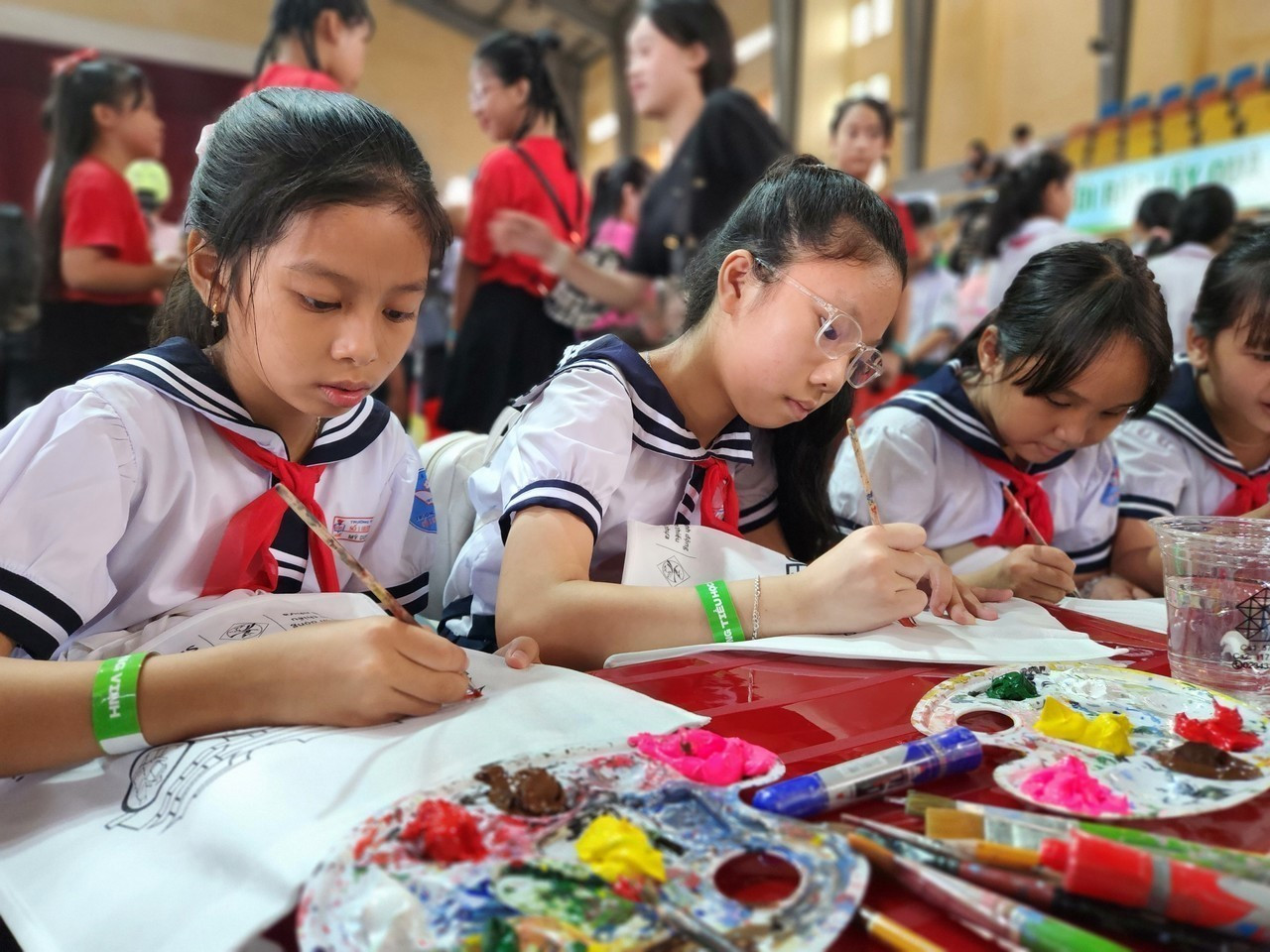
In Vietnam, single-use plastic products are commonly used because of their convenience and low cost. According to the Ministry of Natural Resources and Environment (now the Ministry of Agriculture and Environment), each Vietnamese person uses more than one plastic bag per day, resulting in approximately 31.4 billion plastic bags being discarded into the environment annually.
Only 17% of these are reused or recycled, and single-use plastics make their way to landfills or are released into the environment. Addressing the issue requires a joint effort of society, with young people playing a key role as the pioneering force with significant influence.
Habits that need to be changed
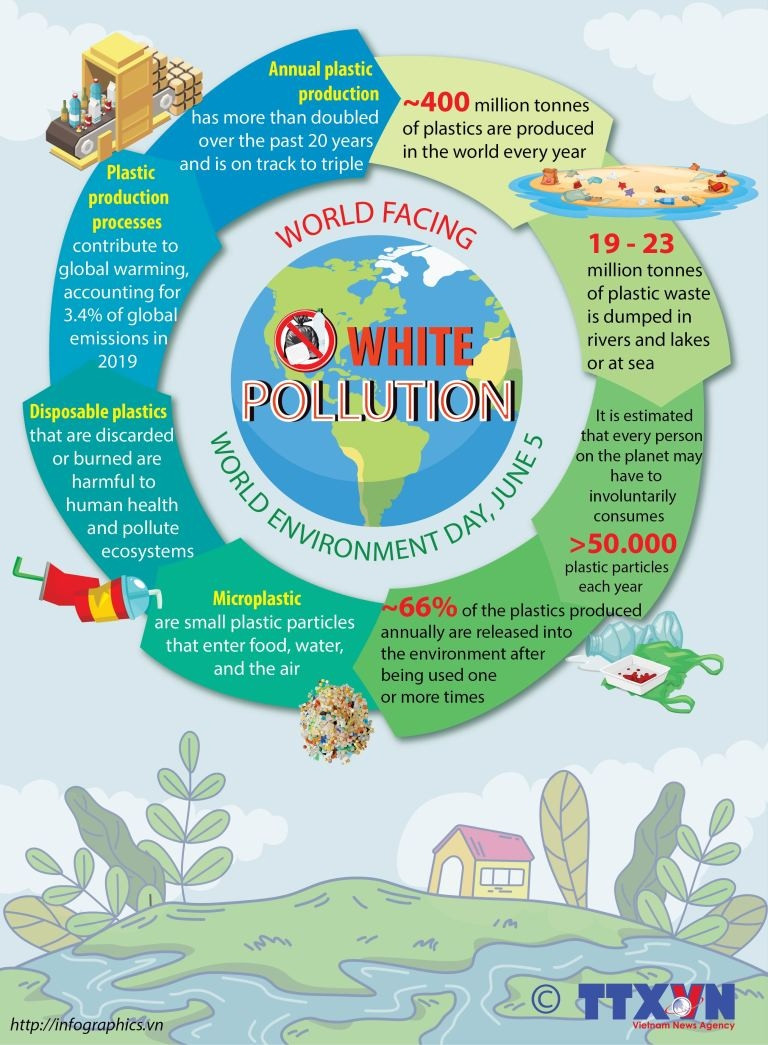
Statistics from the Ministry of Agriculture and Environment indicate that Vietnam is among the countries with the highest volume of plastic waste, with young people being the largest consumers of single-use plastics.
The primary reason is fast and convenient consumption habits, along with the rapid growth of e-commerce, particularly food delivery and online shopping services.
Fast and convenient consumption habits, along with the rapid growth of e-commerce, particularly food delivery and online shopping services push the consumption of single-use plastics. (Photo: VNA)
A recent survey, by the Vietnam National Plastic Action Partnership (NPAP Vietnam) in collaboration with the Vietnam E-Commerce Association, of nearly 3,000 university students, shows that the younger generation is not only aware of the issue but also eager to speak out and take action.
The survey, conducted between November and December last year, aimed to assess awareness and consumption habits among the youth and to build a database to support recommendations for reducing plastic pollution in Vietnam in the future.
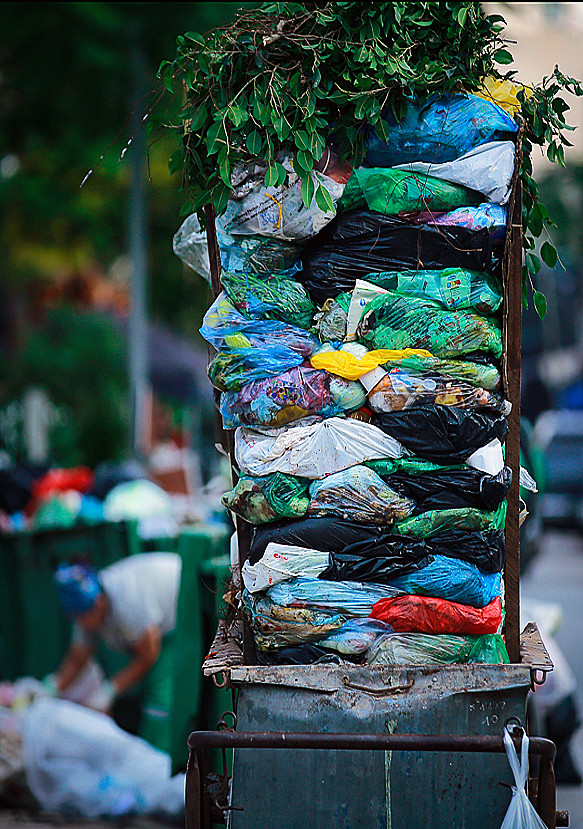
Most students still maintain the habit of using single-use plastics in their daily lives. About 60% identified plastic bags as the most commonly used single-use item and emphasised that they should be a priority in efforts to reduce plastic pollution in Vietnam.
The survey reveals that the frequency of plastic bag use within a week is 54%, reflecting the prevalence of this habit.
A deeper analysis of factors influencing consumption behaviour shows that convenience is the leading reason for continued use of single-use plastics, cited by 67% of respondents.
Additionally, cost is a significant barrier, with 39% of the students believing that alternative products to single-use plastics are expensive.
Environmental awareness and social pressure also have a certain impact, affecting 38% of the students. Notably, the availability of alternative products is not a decisive factor, as many young people still choose single-use plastics despite alternative solutions being available in the market.
The survey indicated that social media plays a crucial role in disseminating information about the harms of single-use plastics. As many as 92% of the students said that accessing this information through platforms like Facebook, TikTok, and Instagram. When purchasing single-use plastic products, 39% of the students admitted to feeling guilty to varying degrees.
Notably, 40% of the students expressed motivation to take measures to reduce plastic use. Additionally, 83% of the students, equivalent to 2,900 out of 3,945 responses, agreed that consumers bear primary responsibility for reducing single-use plastics usage.
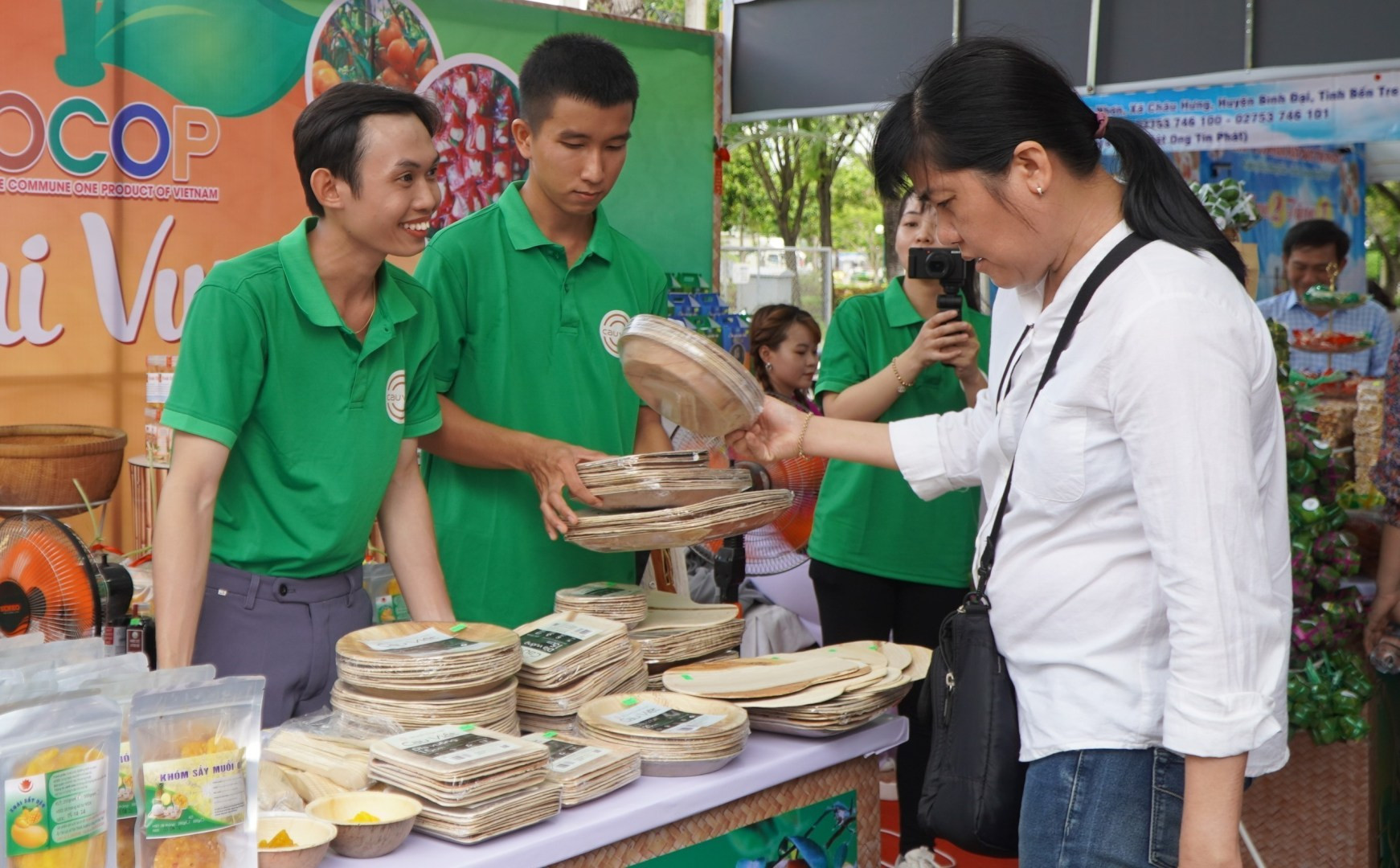
From the students’ perspective, over 50% identified consumption habits as the biggest barrier to minimising single-use plastics, 53% believed that convenience is the factor that leads them to continue using single-use plastics, while 54% noted that the lack of policies encouraging businesses to transition to environmentally friendly products is also a significant obstacle.
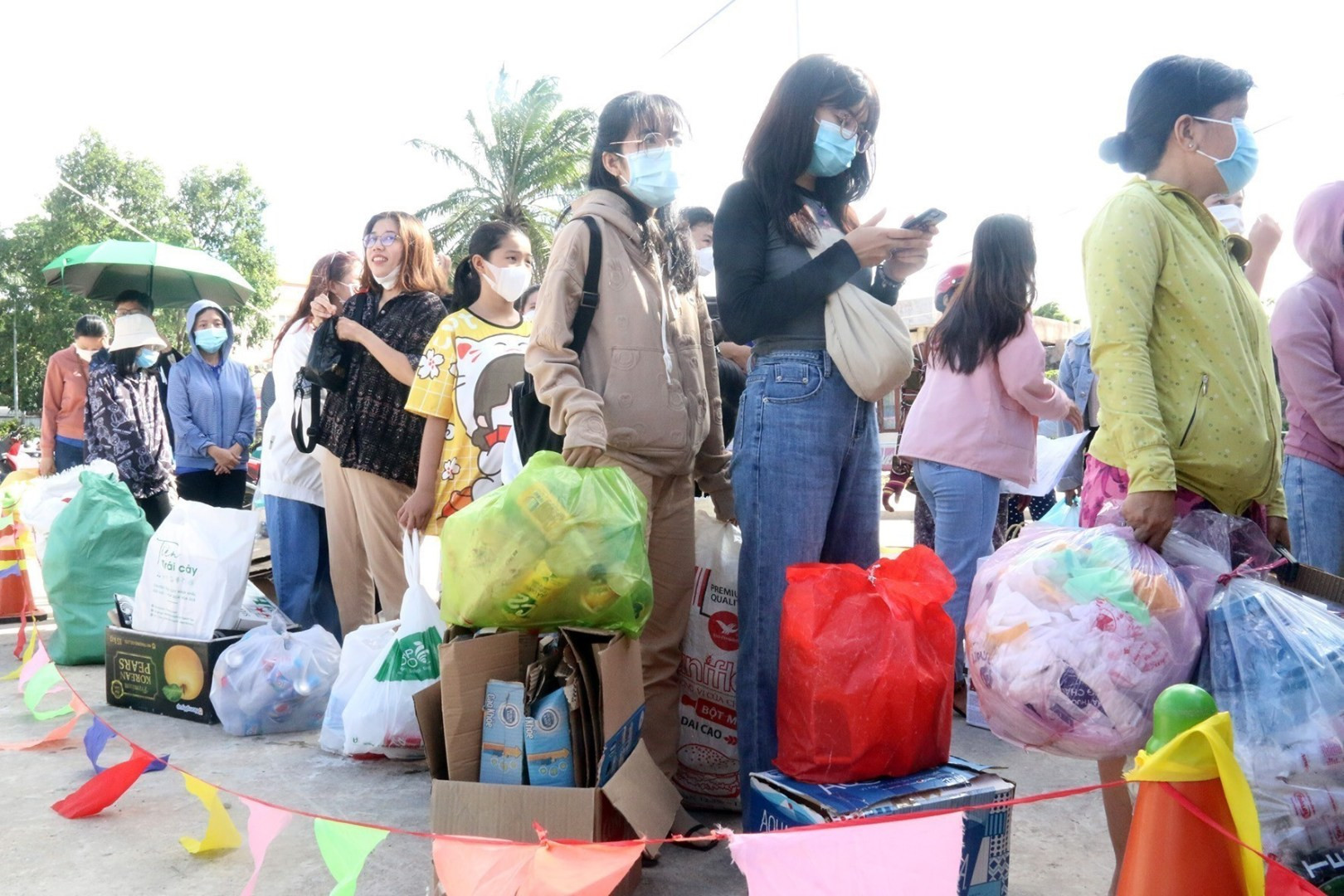
According to Communications and Connectivity Assistant for the NPAP Vietnam Nguyen Vu Linh, although the survey was conducted over a short period and on a limited scale, the results show that a considerable segment of Vietnamese youth is well aware of plastic pollution issues, willing to change their consumption behaviors, and actively supports green product campaigns.
This opens up many opportunities to develop practical action programmes aimed at promoting sustainable lifestyles and striving for a greener, cleaner, and more beautiful environment in the future.
Solutions to eliminate single-use plastics

At a recent seminar on the culture of using single-use plastics organised by the United Nations Development Programme (UNDP) in Vietnam, Le Ngoc Tuan from NPAP Vietnam emphasised that plastic pollution is visible, posing serious threats to the environment and human health.
The root of the problem stems from unsustainable production, consumption, and disposal of plastics. People are trading the sustainable future of our planet for immediate convenience. It is time to rethink this, especially for the youth who are the owners of the future.
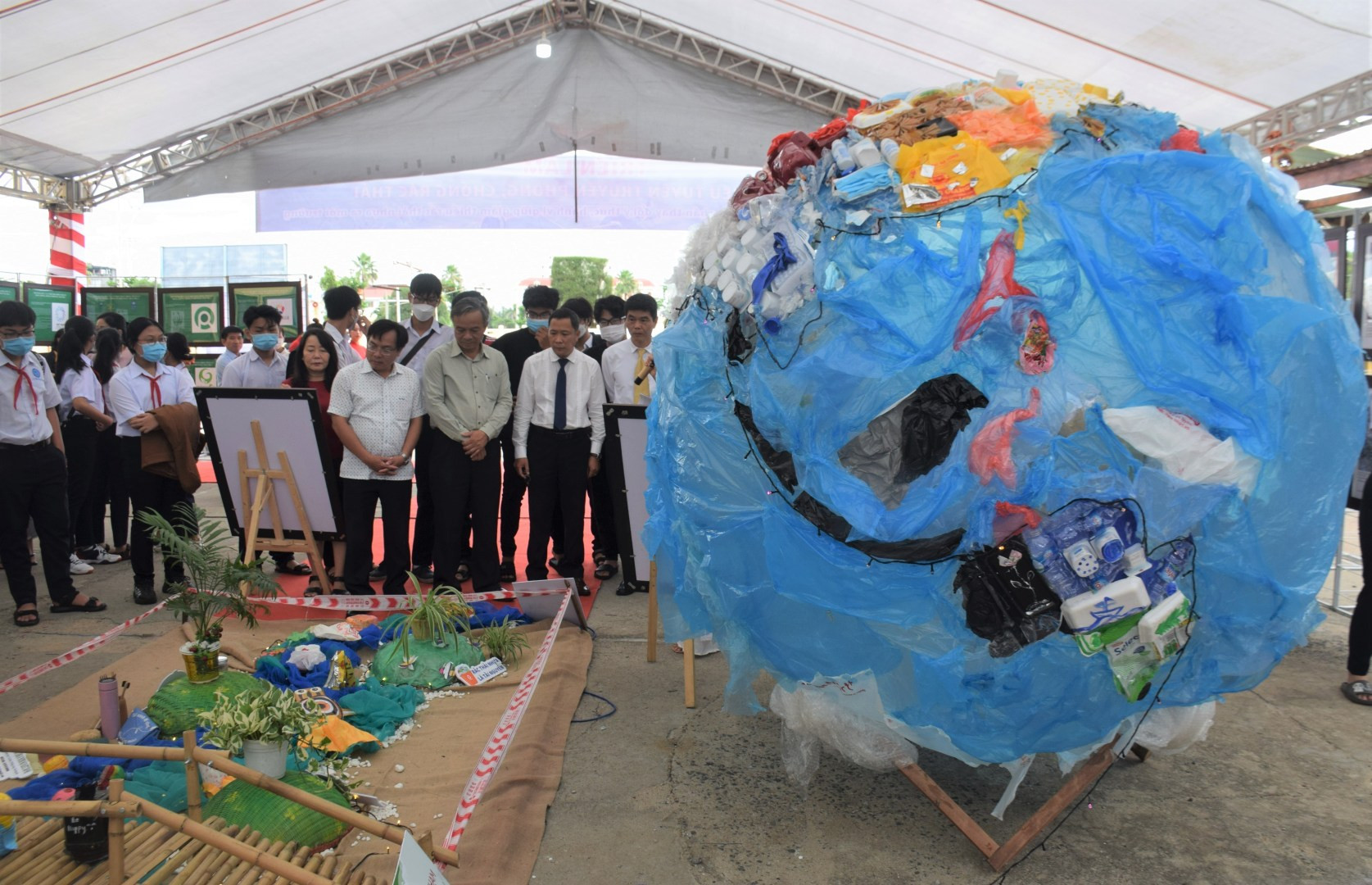
Dr. Kim Thi Thuy Ngoc from the Institute of Strategy and Policy on Agriculture and Environment under the Ministry of Agriculture and Environment noted that plastic use is pervasive in today’s society. Single-use plastic products are everywhere, from street vendors and local markets to supermarkets and fast-food restaurants.
To address this issue, a shift in both awareness and individual actions is necessary, along with supportive policies from the government to promote the production and consumption of alternative products.

One important solution to reduce single-use plastics is to encourage behavioral change within the community, especially among youth.
Ngoc held that reducing the use of plastic bags and single-use plastics among students can be achieved through competitions, green clubs, and environmental campaigns.
These initiatives not only raise awareness but also motivate students to actively participate in environmental protection activities. Also crucial is businesses changing production habits and providing alternative products.
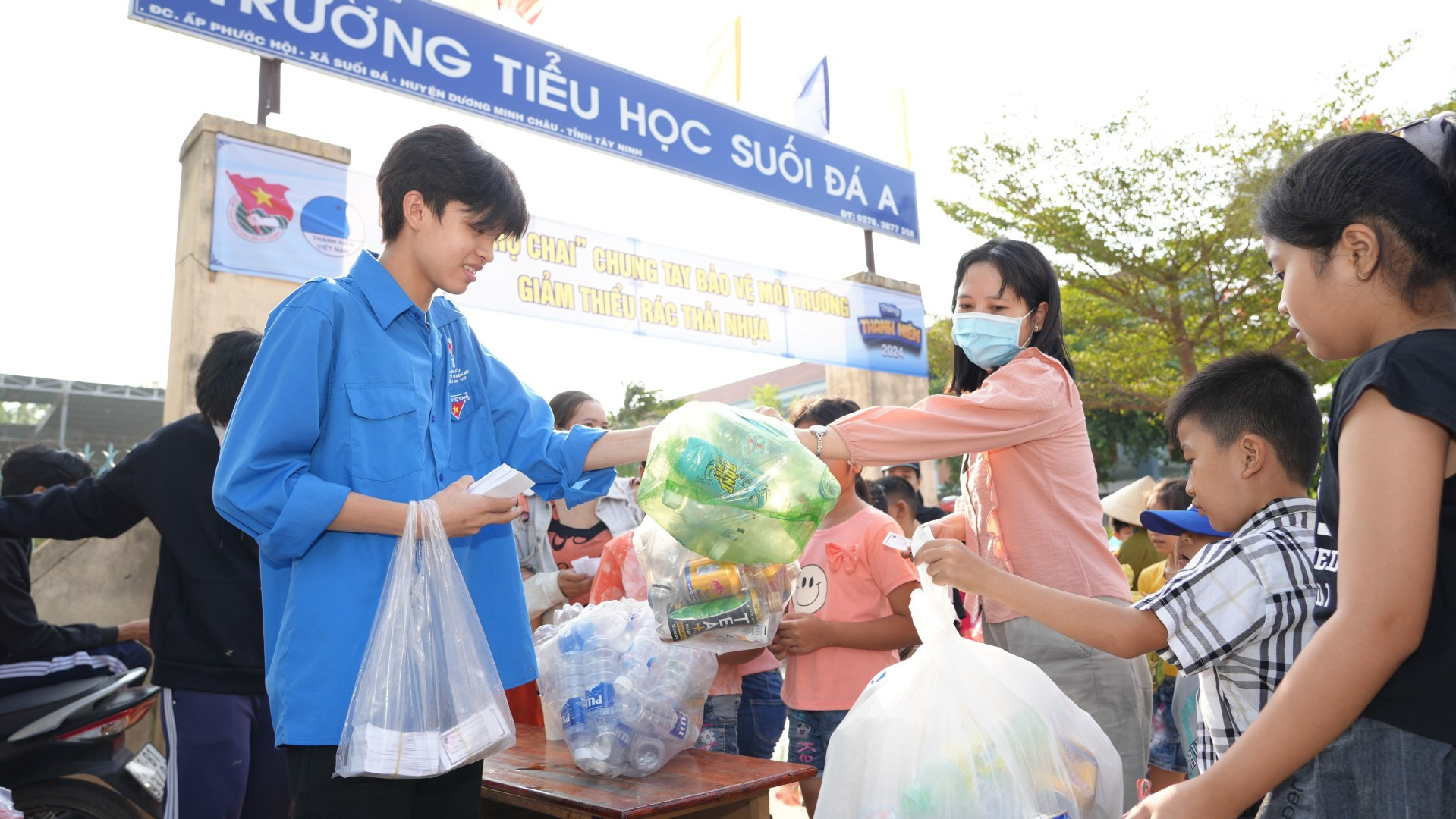
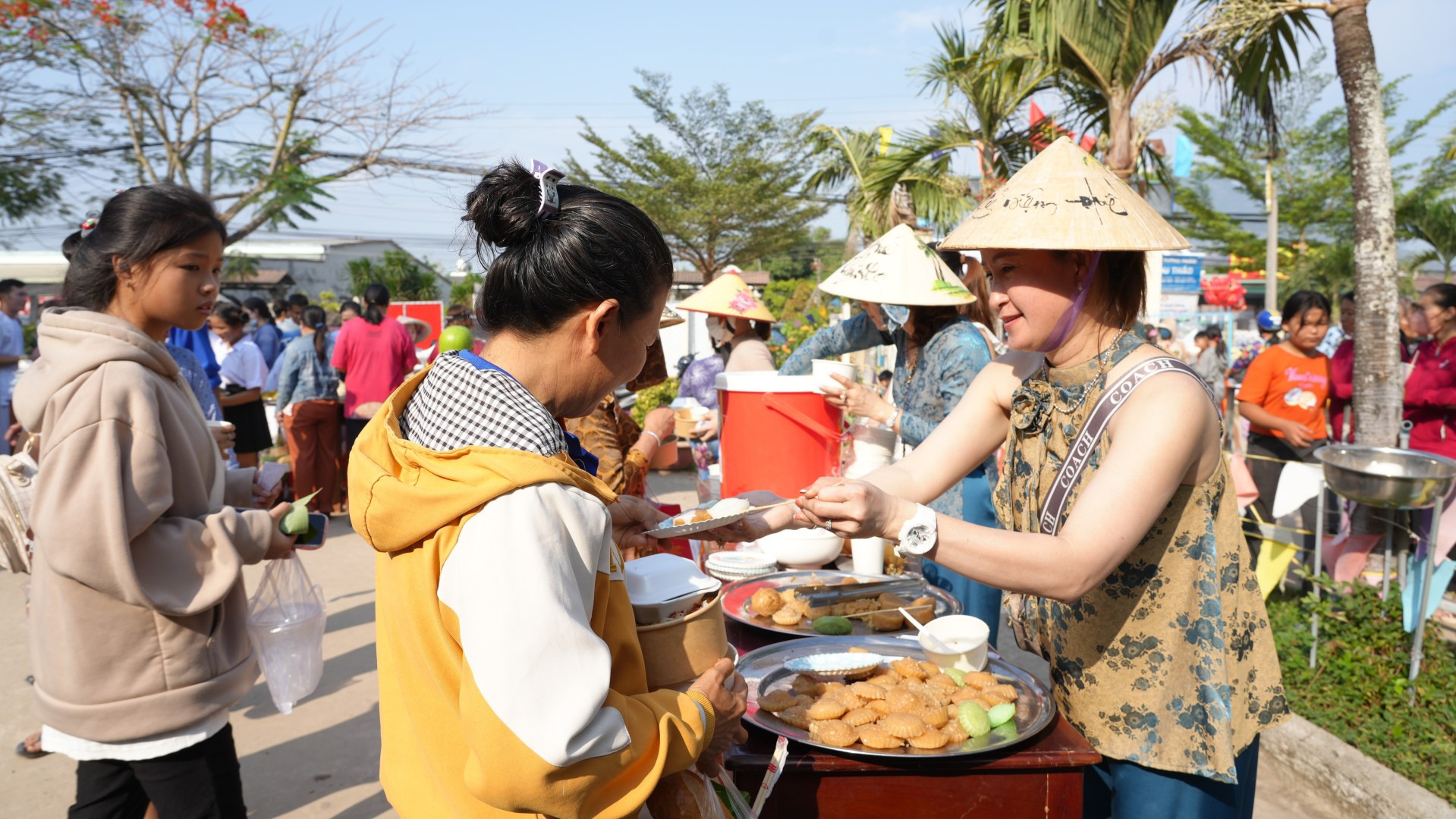
People buy products with plastic waste instead of money in a fair called Cho Chai (Bottle Market) in Tay Ninh province. (Photo: VNA)
From a consumer perspective, Hoang Viet Anh, a student at National Economics University, shared that while he practices a green lifestyle, his consumption behavior remains impulsive and inconsistent. Therefore, clear incentive mechanisms, such as rewards or recognition for choosing alternative products, are necessary.
When acknowledged and encouraged, young people will find it easier to begin sustainable consumption habits and naturally develop long-term environmental awareness.

According to a 2023 study by the Institute of Strategy and Policy on Agriculture and Environment, cost is one of the major barriers to transitioning to environmentally friendly products.
The price of biodegradable bags is 2.6 times higher than that of plastic bags, while paper boxes are priced 2 to 10 times higher than plastic containers. Increased costs are the primary reason businesses and consumers are hesitant to change.
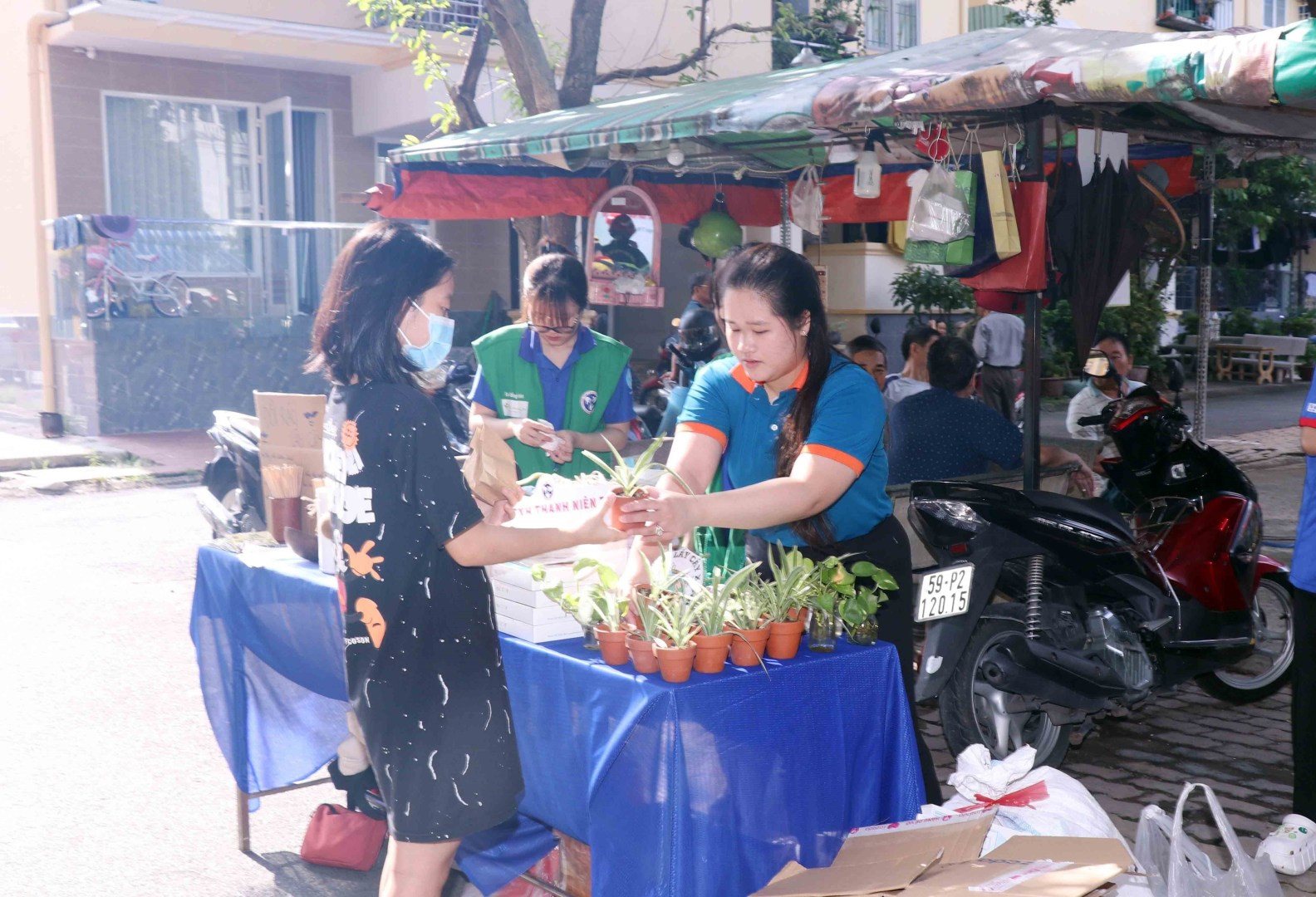
In addition to awareness, implementing specific solutions such as incentive policies for using environmentally friendly products, programmes to exchange single-use plastics for reusable items, and gradual shifts by businesses to eco-friendly packaging are practical directions.
Recognising the severity of plastic pollution, the Vietnamese Government has prioritised addressing this issue through specific laws, regulations, and action programmes.
The Environmental Protection Law and Decree No. 08/2022/ND-CP that concretises some provisions of the law outline a roadmap to limit the production and import of single-use plastic products, non-biodegradable plastic packaging, and products containing microplastics.
Accordingly, from January 1, 2026, the production and import of non-biodegradable plastic bags smaller than 50 cm x 50 cm and with a thickness of less than 50 µm will be prohibited. After December 31, 2030, the production and import of single-use plastic products, except those certified with the Vietnam Eco-Label; non-biodegradable plastic packaging, including non-biodegradable plastic bags, foam plastic containers for food; and products containing microplastics will cease.
